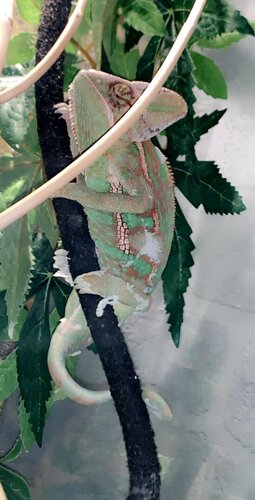Char.claugh
Member
My 7 month old male veiled is currently shedding but can’t seem to shake the shed off his toes and I don’t want him to lose a toe. His last shed lasted 2 days start to finish, this time we’re on the fifth day and it doesn’t look like it’s coming off any time soon. It might be normal and I might be overreacting I’d just rather be sure and I want to know how to help him if it doesn’t come off in the next few days.






